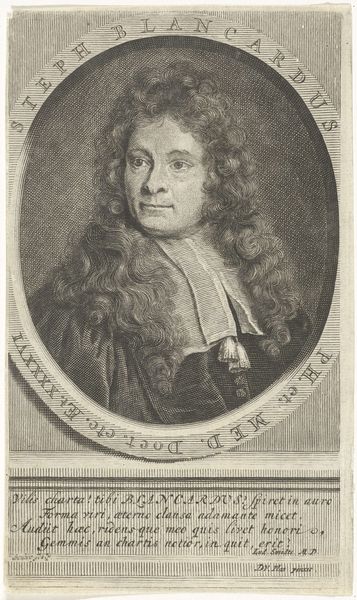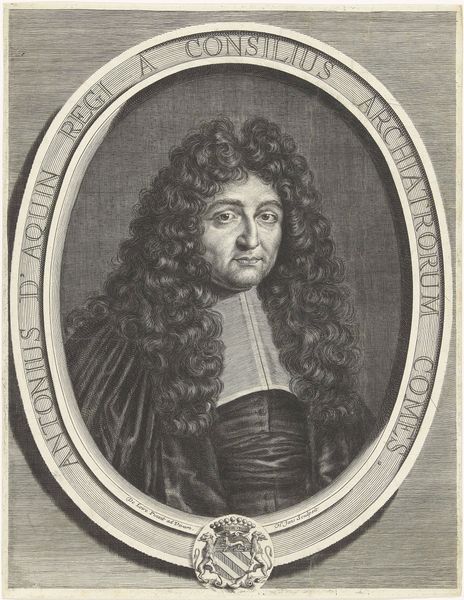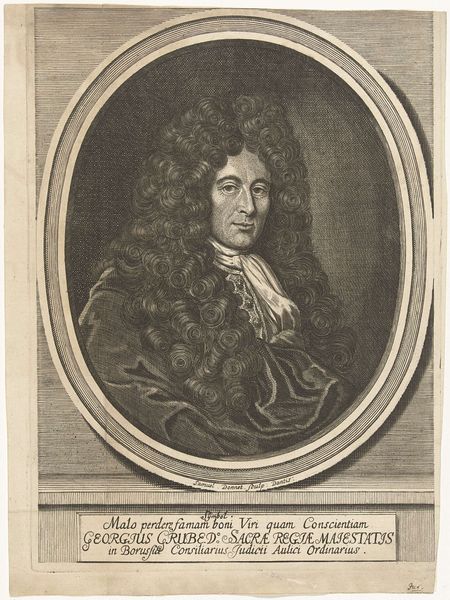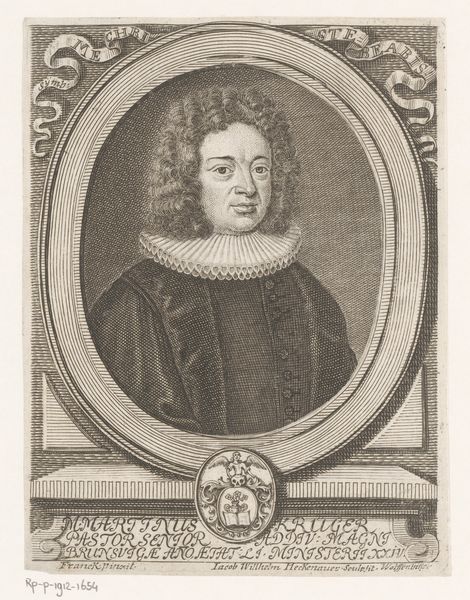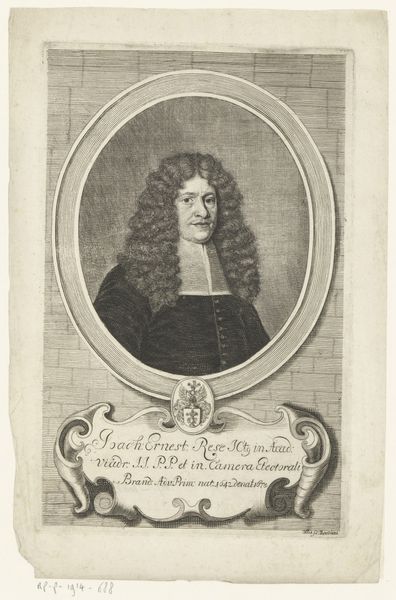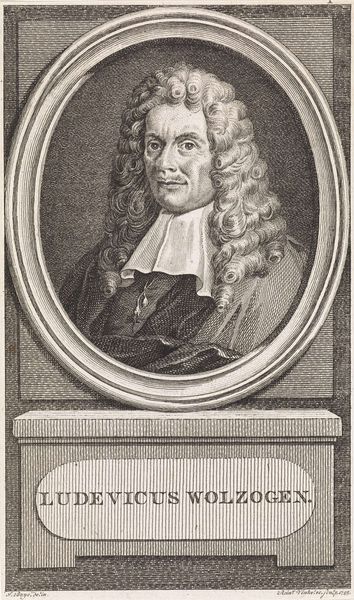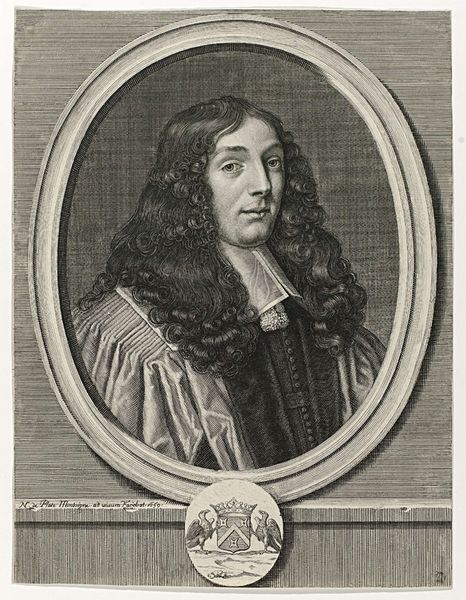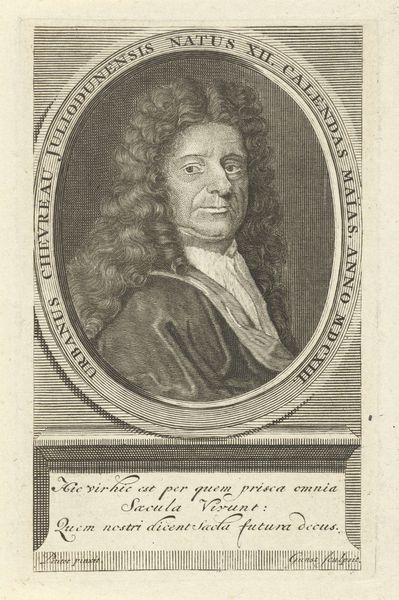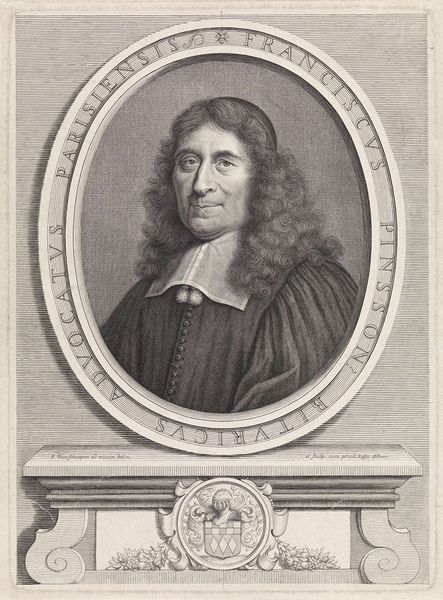
print, engraving
#
portrait
#
baroque
# print
#
old engraving style
#
engraving
Dimensions: height 118 mm, width 73 mm
Copyright: Rijks Museum: Open Domain
Editor: So, this is "Portret van Thomas De Lorme," dating roughly from 1630 to 1676, by Nicolas Auroux. It's an engraving, and what strikes me is the sheer detail achieved with such a limited medium. How do you read this piece, thinking about its materiality? Curator: Well, immediately I consider the laborious process of engraving. Think of the artist, Auroux, meticulously carving into a metal plate to produce this image. Each line is a deliberate act, a negotiation between artistic vision, the constraints of the material, and the demands of the patronage system that sustained such craft. Editor: So, it’s less about pure artistic expression and more about navigating the realities of production? Curator: Exactly! Consider the social context. Who was Thomas De Lorme? What status did he hold that warranted such a portrait? The engraving, as a multiple, would have circulated amongst a specific social group, reinforcing hierarchies and ideals. The quality of the materials – the paper, the ink – even the skill of the printer, all contributed to its perceived value and its role in constructing social identity. Editor: That’s fascinating. I hadn't thought about how the physical object itself communicates status. What about the fact that it's a print, allowing for multiples? Does that change how we see the work? Curator: Absolutely. The reproducibility of the engraving makes it distinct from a unique painting. Its value lies not just in the image itself, but in its capacity to disseminate information and ideas within a network. It is an early form of mass media, reflecting and shaping cultural tastes and social values. Editor: It makes me consider the economics involved – who could afford it, and what that says about the art market then. Curator: Precisely! By focusing on these material and social aspects, we move beyond a purely aesthetic appreciation and start to understand the artwork as a product of its time, embedded in a complex web of relationships. Editor: I learned so much about the historical background that produced this piece! Thank you! Curator: A materialist approach allows us a far richer understanding, I hope you found it valuable!
Comments
No comments
Be the first to comment and join the conversation on the ultimate creative platform.


